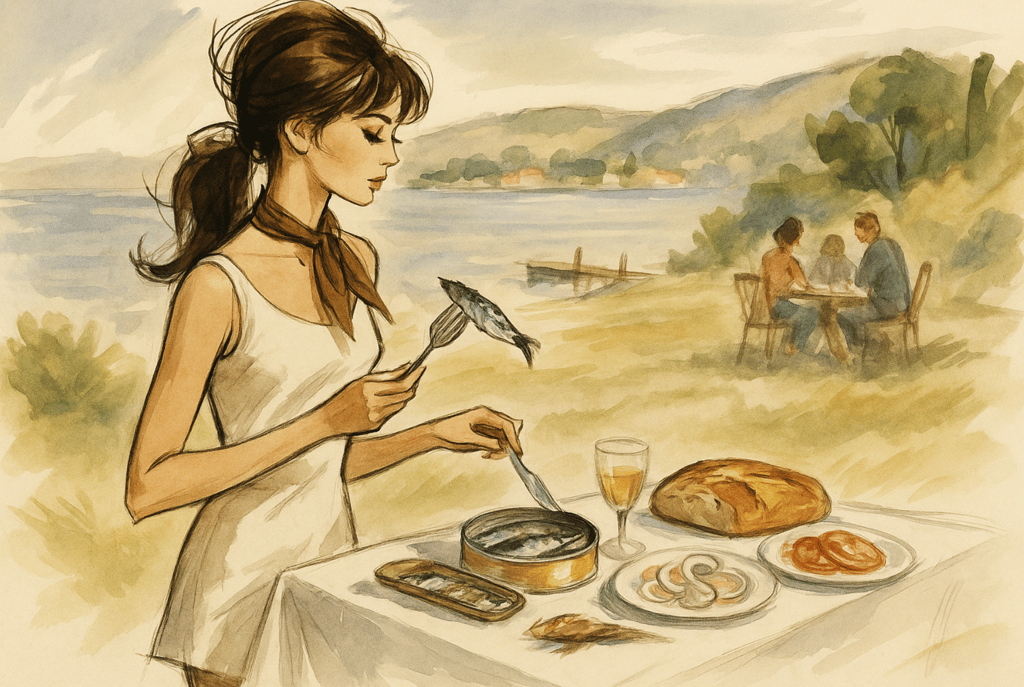Surströmming: Sweden’s Fermented Fish and the Art of Summer Funk
Discover surströmming, Sweden’s famous fermented fish — a bold summer tradition of tangy flavour, outdoor feasts, and centuries-old preservation techniques.
FOOD HISTORY & TRADITIONS


At Hida Dream Home, we have a soft spot for those foods that carry not just flavour, but a whole story — dishes that divide opinions yet anchor themselves deeply in tradition. Few are as notorious, or as deeply tied to the Swedish summer, as surströmming — the fermented Baltic herring famous for its explosive tins, its unmistakable aroma, and its loyal following.
For the uninitiated, surströmming might seem more like a dare than a delicacy. It begins as fresh Baltic herring, caught in spring and preserved in a way that dates back centuries. The fish is only lightly salted, just enough to prevent rot, and then left to ferment in barrels for months. During this time, naturally occurring bacteria break down proteins and fats, creating a distinctive sour, tangy, and powerfully pungent aroma. Once canned, the fermentation doesn’t stop. That’s why surströmming tins often bulge with pressure — and why opening one can be a dramatic event.
It’s not just the smell that turns heads. Surströmming is banned on many commercial flights because of the risk of cans bursting at altitude. But for Swedes, particularly in the north, that unmistakable scent signals something more than shock value: it signals summer, tradition, and a connection to the old ways of preserving food before refrigeration.
A typical surströmming feast takes place outdoors — for obvious reasons. The table is laid with round or thin flatbreads, boiled potatoes, chopped red onions, and dollops of sour cream or crème fraîche. Each diner assembles their own wrap, layering the intensely savoury fish with mild, cooling accompaniments that balance the flavour. The air may be filled with laughter, groans from first-timers, and the clinking of aquavit glasses, but beneath it all, there’s a quiet respect for the heritage in every bite.
Fun fact: To avoid the occasional brine explosion, some seasoned surströmming lovers open their tins underwater — in a bucket or even a nearby lake. It keeps the mess contained and tempers the initial wave of aroma.
Surströmming is more than a stunt; it’s a snapshot of Swedish food culture at its most unapologetic. Like crayfish parties and midsummer feasts, it’s an occasion as much as a meal. The fish’s strong flavour, developed through careful patience, represents resilience and resourcefulness — a nod to a time when preserving the catch was vital for survival through the long winters. Today, while many Swedes never touch it, others wouldn’t dream of letting a summer pass without at least one gathering centred around those famous tins.
For those willing to brave the funk, the payoff is an umami-rich, tangy flavour unlike anything else — one that, once acquired, becomes a taste of nostalgia, of family, and of open-air evenings beneath the endless Nordic twilight.
So the next time you hear about surströmming, don’t just think of the smell. Think of the centuries of tradition, the laughter around summer tables, and the way a simple fish, left to the patient work of fermentation, can become something so much larger than the sum of its parts.
